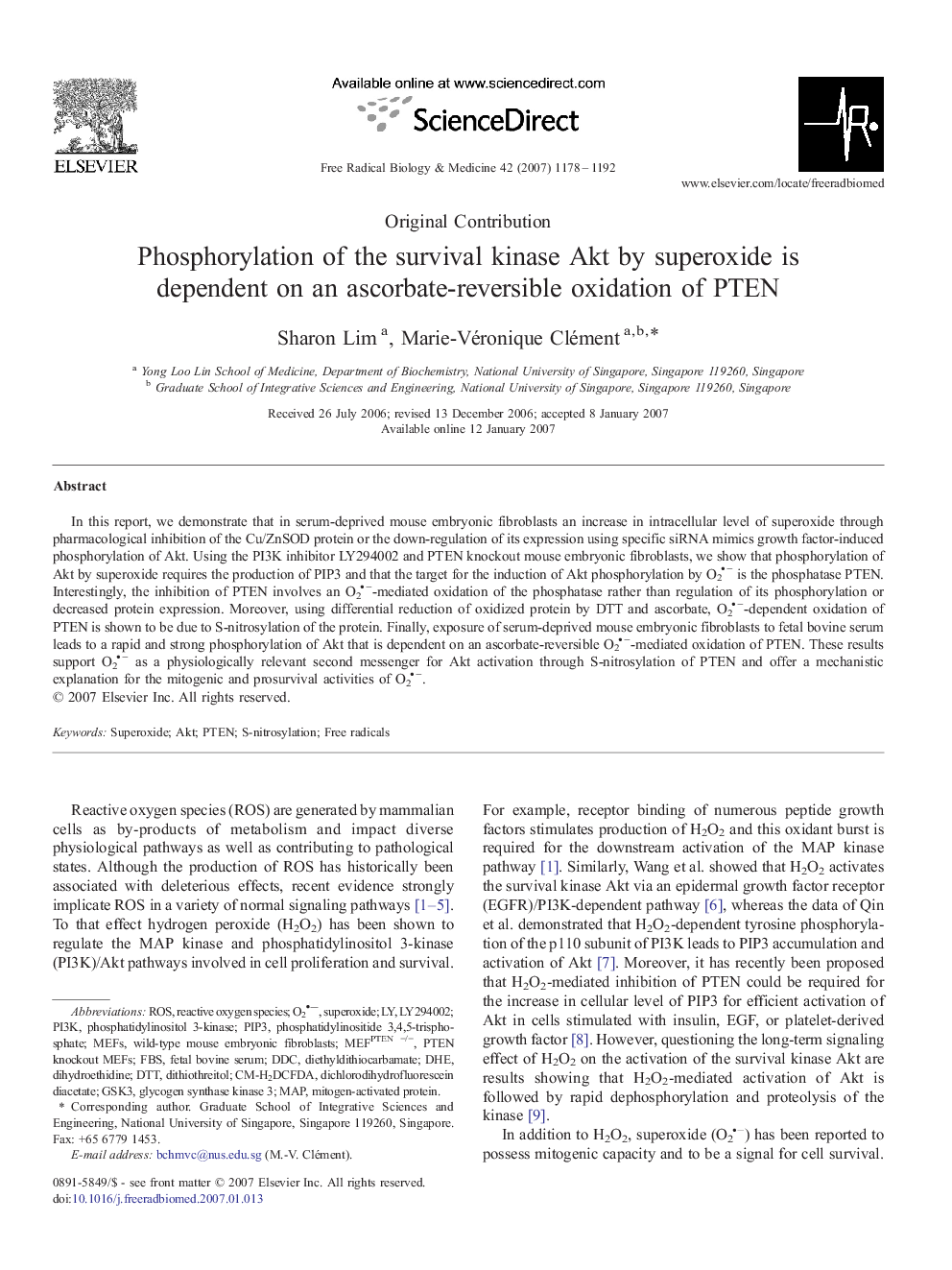| Article ID | Journal | Published Year | Pages | File Type |
|---|---|---|---|---|
| 1911439 | Free Radical Biology and Medicine | 2007 | 15 Pages |
In this report, we demonstrate that in serum-deprived mouse embryonic fibroblasts an increase in intracellular level of superoxide through pharmacological inhibition of the Cu/ZnSOD protein or the down-regulation of its expression using specific siRNA mimics growth factor-induced phosphorylation of Akt. Using the PI3K inhibitor LY294002 and PTEN knockout mouse embryonic fibroblasts, we show that phosphorylation of Akt by superoxide requires the production of PIP3 and that the target for the induction of Akt phosphorylation by O2− is the phosphatase PTEN. Interestingly, the inhibition of PTEN involves an O2−-mediated oxidation of the phosphatase rather than regulation of its phosphorylation or decreased protein expression. Moreover, using differential reduction of oxidized protein by DTT and ascorbate, O2−-dependent oxidation of PTEN is shown to be due to S-nitrosylation of the protein. Finally, exposure of serum-deprived mouse embryonic fibroblasts to fetal bovine serum leads to a rapid and strong phosphorylation of Akt that is dependent on an ascorbate-reversible O2−-mediated oxidation of PTEN. These results support O2− as a physiologically relevant second messenger for Akt activation through S-nitrosylation of PTEN and offer a mechanistic explanation for the mitogenic and prosurvival activities of O2−.
